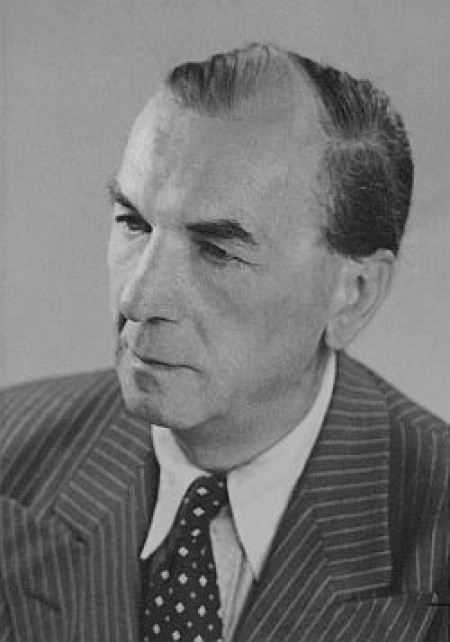
1 December 1885, Budapest – 1954, Los Angeles
"…currently he is the best cellist at the Academy" – Bartók said in a letter dated November 1902, a few days before they renewed their earlier, brief Pozsony acquaintance in Emma Gruber's salon. Jenő Kerpely was Dávid Popper's pupil at the Music Academy between 1901 and 1905, but for two years (from 1903 till 1905) also studied composition with Hans Koessler. Owing to his virtuosic instrumental playing and outstanding talent as a performer, he was one of the constant participants in the Budapest chamber evenings even while he was a student, partnering the best, among them Bartók and Dohnányi. Musical history registers his name from 1910 onwards, when he founded, with Imre Waldbauer, János Temesváry and Antal Molnár, the Waldbauer-Kerpely String Quartet. During its thirty-six years of existence, the quartet became world-famous for their interpretations not only of the classic string quartet and string chamber music literature, but also of contemporary compositions. Géza Csáth (Translator's note: Hungarian writer, doctor and music critic, 1887-1919) called the members of the quartet Bartók and Kodály's comrades-in-arms. The start of their career was linked to the two separate composer's evenings held for the two men, where, among other things, Kerpely and Bartók played Kodály's Sonata for cello and piano, and Bartók's Piano quintet, and both composers' First String Quartet were performed. The value of their popularising work in the first decades of the century is almost beyond estimation: besides the works of Bartók, Dohnányi and Kodály, the string and piano chamber compositions of Debussy, Ravel, Schönberg, Milhaud and Reger were also largely introduced to the Hungarian audience by the quartet.
Besides playing in the quartet, Jenő Kerpely regularly appeared as a soloist, and also in partnership with Hubay, Dohnányi, Bartók, Szigeti and others. His repertoire included the classic and the contemporary parts of the solo, sonata and trio literature alike. His playing also inspired the birth of new works. Kodály's solo cello sonata is dedicated to him, and Bartók composed the cello-piano version of the First Rhapsody for him.
Jenő Kerpely taught cello as a main subject, as well as chamber music and string quartet playing at the Music Academy between 1913-19 and 1929-48. Though being a performing artist and teaching were equally important parts of his career, after the fall of the Republic of Soviets, the persecution of Reinitz, Dohnányi, Bartók and Kodály, who had been members of the Academy's directorate, affected Kerpely as well, and he returned to the Music Academy only ten years later, when Dohnányi was appointed director for a second time. In the course of his teaching work of over a quarter a century, he launched the professional careers of more than thirty young musicians, among them his successor as professor at the Music Academy, Ede Banda, and the cellist of the world-famous Hungarian String Quartet, Gábor Magyar.
The end of the Second World War also brought the existence of the Waldbauer-Kerpely String Quartet to a close. At their last concert, in 1946, they gave the Budapest premier – more than five years after the Kolisch Quartet premiered it in London – of Bartók's Sixth string quartet, and then the quartet disbanded. Like Imre Waldbauer, Jenő Kerpely also left Hungary and settled in the United States in 1948. It is a tragic feature of his career – and an irremediable omission by the recording companies – that no disc preserves either his solo, or his chamber music performances. The memory of the artistic greatness of Jenő Kerpely and of the Waldbauer-Kerpely String Quartet is preserved only in the recollections of the contemporaries and in the concert chronicles.
T. S.


